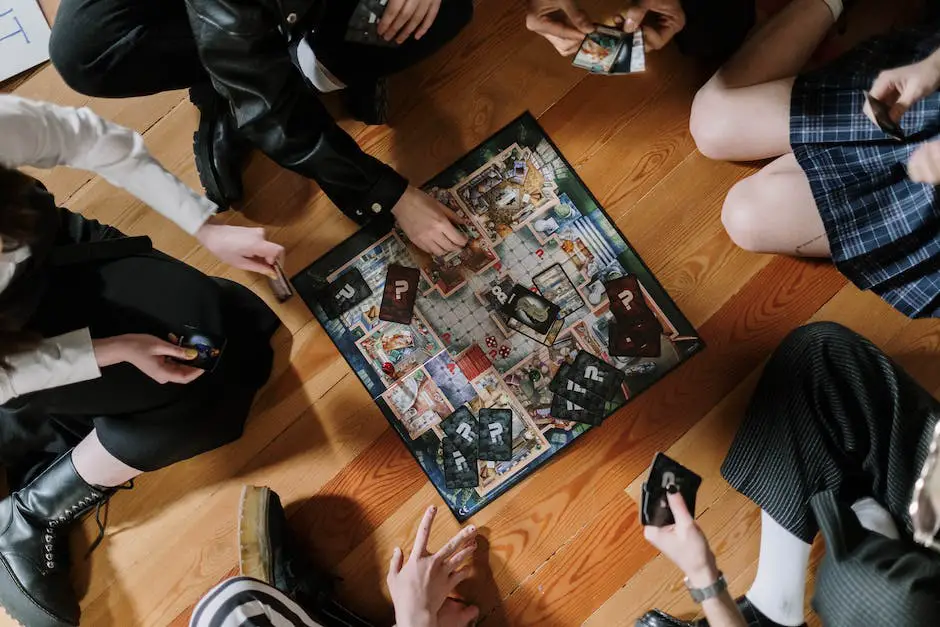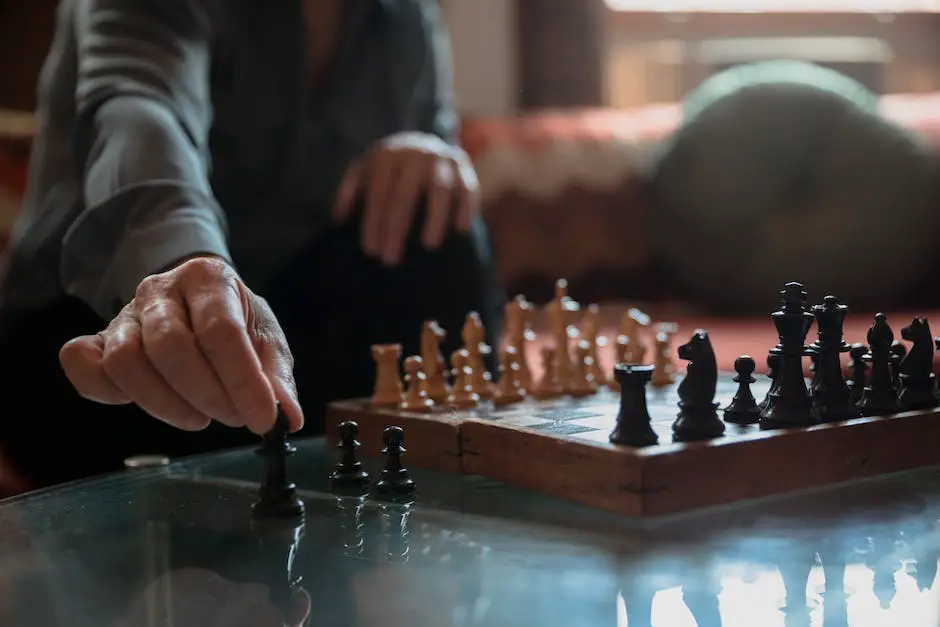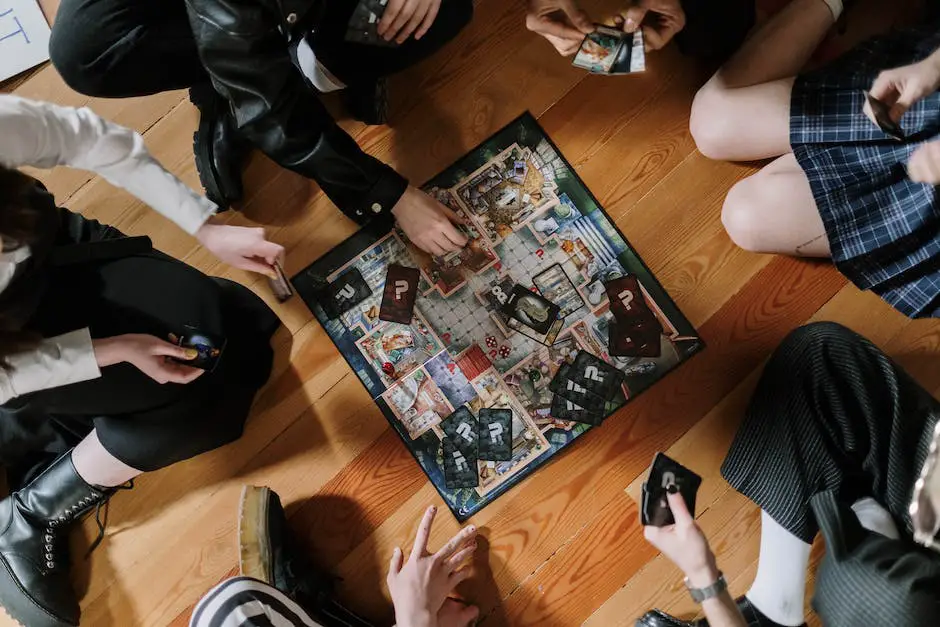Board game design is a fascinating and multi-faceted discipline, blending art, storytelling, and strategic thinking to create immersive and engaging experiences for players. The journey from initial concept to a polished game on store shelves is one filled with challenges and rewards, offering a unique blend of creative expression and technical problem-solving. This essay will explore key topics in board game design, including understanding game mechanics, the importance of theme and narrative, achieving game balance and difficulty, the prototyping and playtesting process, and the steps involved in production and publishing. The goal is to provide an insightful and comprehensive guide to anyone interested in delving deeper into the world of board game design.
Understanding Game Mechanics
Introduction to Game Mechanics
In the world of board game design, game mechanics are the fundamental building blocks that shape the overall experience and satisfaction players receive from playing a game. They define the rules and systems that govern player interaction and decision-making, providing structure and balance. By understanding how these mechanics work together, designers can craft engaging and strategic gameplay experiences. In this article, we will explore popular mechanics in board game design, their advantages and disadvantages, and how to effectively combine them for a balanced, enjoyable game.
Player Actions and Interaction
Player actions are at the heart of board game mechanics. They are the primary way in which players interact with the game and with each other. Typical actions include moving pieces, collecting resources, trading with other players, and attacking opponents. Designers often need to balance the number and type of actions available, making sure each action is meaningful and provides interesting choices for the player.
Player interaction is also a key component of board game mechanics. Designers should carefully consider how much interaction players will have with each other. This can range from direct conflict, such as in a war game, to indirect competition or cooperation, as in Euro-style games. Striking the right balance of interaction can help create tension and diversity in gameplay.
Movement Mechanics
Movement is an essential mechanic in many board games. It can serve various purposes, such as maneuvering pieces to optimize scoring or positioning them for strategic advantages. There are several different ways to approach movement mechanics, such as grid-based movement, point-to-point movement, or even freeform movement on an open board.
Designers should consider the implications of different movement mechanics on gameplay. For example, grid-based movement may be more suitable for competitive games with direct conflict, while point-to-point and freeform movement may work better for exploration and area control games.
Resource Management
Resource management is a common mechanic in board game design, challenging players to balance their limited resources to achieve their objectives. Resources can be tangible, like tokens representing food or wood, or intangible, like action points or time. Players must decide the best way to allocate their resources to improve their position, making tough decisions about what they can afford to expend and what they need to hold onto for later.
Effective resource management mechanics offer trade-offs, forcing players to weigh short-term benefits against long-term goals. These decisions can create tension and interesting choices in gameplay.
Conflict Resolution
Conflict resolution is another essential mechanic in many games, particularly those involving direct competition or player interaction. Designers should consider the different options available for resolving conflicts, such as dice rolls, card comparisons, or bidding auctions. The chosen mechanic can significantly impact the level of strategy and randomness in the game.
When designing conflict resolution mechanics, it’s essential to consider the level of player control or luck involved. Some games may emphasize skill and strategic choices, while others might feature more luck-based or chaotic outcomes. The appropriate balance depends on the target audience and gameplay experience sought.
Combining Mechanics for a Balanced Game
Designing a board game requires a deep understanding of various mechanics and how they can be effectively combined to create a compelling experience. This involves considering how each mechanic interacts with others and fine-tuning them to strike an appropriate balance between strategy, randomness, player interaction, and pacing.
By exploring the intricacies of game mechanics and learning how they work together, designers gain the ability to craft engaging games that offer depth, repayable challenges, and satisfying player experiences. This knowledge informs the designer’s choices when deciding which mechanics will create the most unique and engaging approach for their specific board game concept.

Theme and Narrative
Choosing a Theme
Another essential component of board game design is selecting a theme. The theme serves as the foundation for the game’s setting, aesthetics, and mood, providing context for the mechanics and narrative. A well-chosen theme will captivate and engage players, fostering their interest in the game world and motivating them to explore its possibilities.
Designers have a plethora of themes to choose from, including established genres such as fantasy, science fiction, historical, or detective, or more unique and unusual options like anthropomorphic vegetables or parallel universes. When making this decision, designers should consider their target audience, existing themes in the market, and their own passion for the subject. A passionate designer will be more equipped and motivated to create a truly compelling game world.
Crafting a Compelling Narrative
Narrative is the story that unfolds within the game, making players feel connected to the world and its characters. To create a captivating narrative, the designer should define the game’s goal, its central conflict, and the roles that players assume. These elements should be consistent with the chosen theme and should encourage player engagement and immersion.
A strong narrative should also have a clear structure, including a beginning, middle, and end, and should leave room for players to make their own choices. It should provide opportunities for players to interact with one another, motivating them to cooperate, compete, or form alliances, depending on the game mechanics.
Integrating Theme and Mechanics
For a board game to be successful, its mechanics should be closely integrated with its theme and narrative. This means that the rules, actions, and objectives should be designed in a way that enhances the game’s thematic experience and advances its plot.
To achieve this goal, designers should first define the game’s core mechanics, such as movement, resource management, or card drafting, and ensure that they are thematically appropriate. The game’s components, such as cards, tokens, and boards, should also reflect the theme in their design and illustrations.
Next, they may choose to incorporate thematic twists to conventional mechanics, such as using deck-building to represent training in a superhero game or having workers age in a game about generations. This will create a novel and engaging gameplay experience that resonates with the game’s theme.
Maintaining Thematic Consistency
Thematic consistency is vital for a board game’s success, as it ensures that players remain immersed in the game world and are continuously motivated to achieve their objectives. To maintain thematic consistency, designers should ensure that all game aspects — including rules, components, artwork, and player actions — reflect and reinforce the chosen theme.
This includes making sure that player actions are logical within the game world and that rules are easy to understand and follow. Additionally, designers should be committed to playtesting and refining their designs, making adjustments if they find aspects of the game that do not fit with the theme or disrupt the narrative flow.
Introduction to Board Game Design
Board game design is a fascinating process that involves a combination of creativity, strategy, and attention to detail. A well-crafted board game offers an immersive and engaging experience for players, drawing them into its theme and narrative. Designers can create memorable and enjoyable games that resonate with players by carefully selecting a theme, crafting a compelling narrative, integrating theme and mechanics, and maintaining thematic consistency. Such considerations allow these games to stand out in a competitive market and appeal to a broad range of gamers.

Game Balance and Difficulty
Game Balance in Board Game Design
Another vital aspect of board game design is game balance, which ensures the overall gaming experience is fair and enjoyable for all players. Game balance refers to the fine-tuning of various mechanisms within the game to provide a semblance of equality among players, preventing one strategy, tactic, or player from dominating the others. A well-balanced game encourages dynamic player interactions and offers multiple viable strategic paths to victory, fostering interesting decision-making and promoting replayability.
Designers can achieve game balance through various techniques, such as playtesting, statistical analysis, or mathematical modeling. The balance in both cooperative and competitive games is crucial. In cooperative games, it’s essential to create a sense of challenge for players, while simultaneously ensuring a winnable game. On the other hand, for competitive games, the balance should be maintained among players by eliminating the possibility of runaway leaders or one-player snowballing wins.
Factors Affecting Game Balance
Numerous factors affect a game’s balance, and it’s vital for designers to recognize them during the design process. These factors include:
- Player skills: Designers must consider the varying skills of players while designing games to maintain balance. Matching a specific difficulty level to the right player demographic is essential, or the game may become either too easy or too challenging.
- Randomness: Random elements, such as dice rolls or card shuffles, can impact a game’s balance by adding an element of luck. Designers need to ensure that randomness doesn’t ultimately determine the outcome of a game, and instead strikes a balance with player skill and choice-driven gameplay.
- Asymmetry: Asymmetric games, where players have different abilities or starting positions, can be challenging to balance. This can be mitigated through techniques, such as role-based balance or handicapping systems, to ensure a fair gaming experience for all.
- Game length: The duration of a game can influence its balance, as some strategies or tactics may become more or less effective over time. Designers must account for this aspect to avoid imbalanced end-game scenarios or momentum swings.
Adjusting Game Difficulty
Designing a game that caters to various skill levels is essential for creating a broad and inclusive gaming experience. A well-designed difficulty curve in a board game makes it easier for new players to get started while ensuring the game remains challenging for experienced players. There are several ways that designers can adjust the game difficulty:
- Rule adjustments: Designers can create scalable difficulty levels by modifying game rules, such as changing victory point thresholds, starting resources, or time limits.
- Handicapping systems: In games where player skill levels vary, handicapping systems can be used to grant advantages to less experienced players to help level the playing field. This can be done through a variety of methods, including additional resources, turns, or other in-game benefits.
- Variable content: Designers can vary the game challenges and scenarios presented to players by introducing different objectives, maps, or other in-game content. This allows gamers to choose the difficulty setting that suits their skill level best, increasing accessibility and replayability.
- Modular expansions: Expansions can add new layers of complexity to a game, giving experienced players more depth and strategy options. Newer players can then focus on the base game’s rules and complexity before delving into expanded content.
Designing and developing a balanced board game is a meticulous process, requiring designers to consider a myriad of factors that impact player experience. Accomplishing this delicate balance ensures a level playing field for all participants and encourages thoughtful strategy and decision-making. By addressing both game balance and appropriate difficulty curves, designers can successfully create engaging and replayable board games that cater to a wide range of player skill levels. It is important to playtest and seek feedback across various gaming communities along the way, as this iterative process will ultimately refine the game and help the designer in achieving that perfect equilibrium.

Prototyping and Playtesting
The Importance of Prototyping in Board Game Design
Following considerations for game balance, the prototyping phase becomes an essential part of board game design. Prototyping allows designers to build a tangible, playable version of their concepts to evaluate and refine their ideas in a practical setting before committing to final production.
A prototype is a rough, “not yet perfect” representation of the game system that demonstrates the mechanics, components, and overall experience a designer is trying to create. It may consist of handmade or temporary elements, such as cards, boards, and pieces made from simple materials like paper, cardboard, or even found objects.
Creating a prototype helps designers visualize and understand the functioning of their game and its various aspects. It enables adjustments, fixes issues, and identifies areas for improvement early in the development process. Additionally, a prototype allows testing of the gameplay experience, balance, and flow, all of which are crucial for creating an engaging and enjoyable board game that caters to different skill levels and offers a broad range of appeal.
Conducting Effective Playtesting
Playtesting is the process of observing people playing your game prototype to gather feedback, identify issues, and refine the design further. It’s essential to involve a diverse range of players during playtesting, as different players bring unique perspectives and experiences to the table. This can help identify issues that the designer may not have noticed, as well as generate ideas on how to improve the gameplay experience.
To conduct effective playtesting sessions, it’s essential to create a comfortable and open environment where players feel encouraged to share their thoughts and opinions. Be organized and prepared to record feedback, either by taking notes, recording audio, or videoing the session. It’s also vital to be open to criticism and be willing to make changes to your design based on the feedback received.
When playtesting, it’s essential to not only observe the actions and reactions of your playtesters but also ask specific questions about their experience. This can help reveal underlying issues or areas for improvement that may not be immediately obvious. Some helpful questions to ask playtesters could include:
- What were the most enjoyable aspects of the game?
- Were there any moments where you felt confused or unclear about the rules or objectives?
- Did you feel that the game was balanced, or did any strategies or elements feel overpowered or underutilized?
- Are there any changes you would suggest to improve the gameplay experience?
Iterating and Improving Based on Feedback
The key to successful board game design lies in collecting feedback from playtesting and analyzing the information to identify areas for improvement. These may involve balancing gameplay, streamlining or clarifying rules, refining components, or enhancing the overall experience. Prioritizing the most critical issues and implementing changes systematically helps you stay focused on the game’s core design without becoming overwhelmed.
It’s essential to continue playtesting the game as changes are made, gathering new feedback, and verifying that modifications are effective. This iterative process should continue until you are satisfied that the game is engaging, enjoyable, and polished.

Production and Publishing
Components of a Board Game
Connecting seamlessly to the design process, understanding the various components that make up a board game is critical. These components can include the game board, playing cards, tokens, dice, miniatures, and rules or instruction booklets, among others. As you design your game and make improvements based on feedback, remember to consider the components necessary for gameplay as well as the artistic elements, such as illustrations and graphic design, to create a visually appealing and accessible experience for players.
Cost Considerations
Designing a game requires not only creativity but also an understanding of the costs associated with producing the physical components of the game. Costs can vary depending on the quality and complexity of the game’s pieces and materials. Cardstock quality, the number of colors used in printing, the type of plastic used for tokens, and the intricacy of miniature models can all impact the overall cost of production. Designers must balance the desired quality of the game with what will be economically feasible for their target audience.
Sourcing Materials and Manufacturing Options
Once the components and costs have been considered, the next step in the board game design process is to source materials and select a manufacturer. There are many different options for manufacturing, ranging from local print shops and 3D printing services to large-scale overseas production facilities. Each option offers its own set of advantages and drawbacks in terms of cost, quality control, turnaround time, and environmental impact. When choosing a manufacturing partner, it is essential to consider these factors and select the one that best aligns with your project goals and budget.
Self-Publishing versus Working with Established Publishers
Another crucial decision for board game designers is whether to self-publish their game or seek the support of an established publisher. Self-publishing offers the most creative control and allows the designer to retain ownership of their intellectual property. However, it also requires the designer to invest personal funds and manage all aspects of the production and distribution process, which can be both time-consuming and risky.
On the other hand, partnering with an established publisher offers several advantages. Publishers have the resources and expertise to manage production, distribution, and marketing, which can significantly increase the game’s chances of success. However, working with a publisher also means giving up a portion of the game’s profits and potentially losing some control over the creative direction of the product.
Crowdfunding
One popular method of funding board game development in recent years has been through crowdfunding platforms such as Kickstarter or Indiegogo. This approach allows designers to raise funds directly from potential customers, who provide “pre-orders” for the game in exchange for various rewards, such as limited edition components or personalized game elements. Crowdfunding can be a powerful tool for gauging interest in a game, building a supportive community, and raising the necessary funds for production without relying on traditional investors or financing methods.
Marketing Strategies
Finally, any aspiring board game designer needs to consider the marketing strategies that will help their game reach its target audience. This can include targeting specific gaming communities or influencers, attending trade shows and conventions, and utilizing social media to create buzz and engage with potential customers. Some designers may opt to work with marketing agencies or consultants to help develop and execute a comprehensive marketing strategy, while others may choose to handle marketing efforts on their own.
Conclusion
In conclusion, board game design involves a variety of factors that extend beyond the actual gameplay. Understanding production and publishing-related aspects, such as component sourcing, manufacturing options, cost considerations, and marketing strategies, is essential for successfully bringing a new board game to life. Furthermore, the decision to self-publish or partner with an established publisher is critical and depends on the designer’s goals and resources. With the right combination of creativity, planning, and industry knowledge, aspiring board game designers can turn their unique ideas into tangible realities enjoyed by players worldwide.

Board game design is an exciting and complex process that brings together numerous elements to create an enjoyable and memorable experience for players. By understanding the intricacies of game mechanics, thematic integration, and game balance, designers can craft compelling gameplay that offers players strategic depth and replay value. Furthermore, the importance of prototyping, playtesting, and refining designs based on feedback cannot be overstated, as it ensures that the final product is both polished and engaging. Lastly, navigating the challenges of production and publishing enables designers to see their dreams come to life, whether through self-publishing or partnering with established publishers. Embracing these crucial aspects of board game design propels aspiring designers in their journey to create the next great gaming experience.